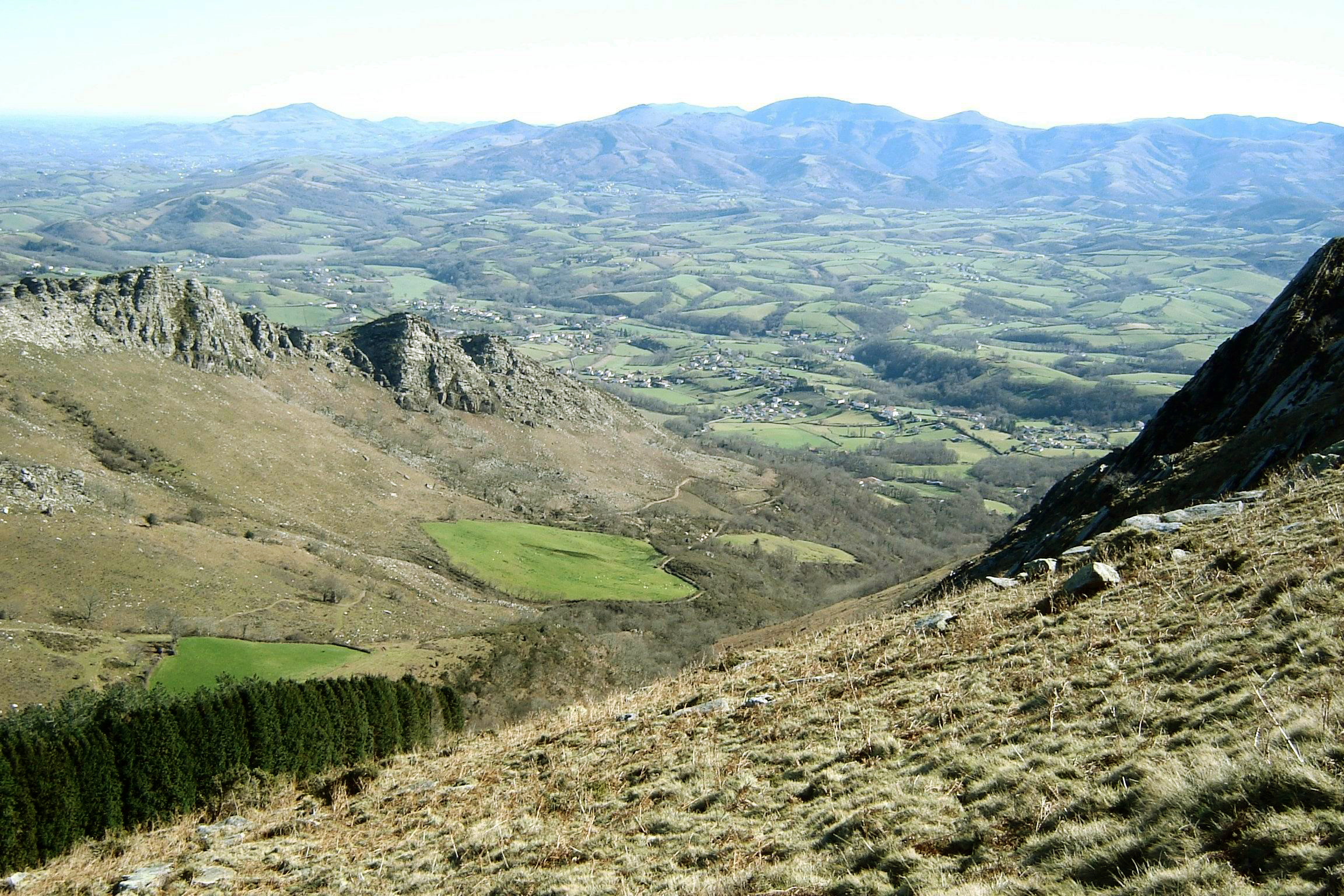Basque ethnography at a glance
For a human settlement, in its broadest sense, to occur the first step is to clear the land (lurra atera or luberritu, in Basque). Temporary forest clearings (labakiak or lur ebakiak) are customarily opened in middle-mountain commons (herriko lurrak), which are both resource and reserve for new land. In 1950 Lapurdi the moors took up between 40 and 75 % of the communal land. The open access and exploitation of shared land was regulated by the Charter.
Here follows the traditional way to clear land (labakitu) on the sides of Larhun Mountain in Sara. A stretch of flat land is chosen; stacks of fern (iratze-metak) protected by a grove of trees will serve as bedding for the flock in the fold (ardi-borda). The plot (larrekia) is freed of stones (1), burnt and the debris used to build a wall (3). The ashes are scattered over the piece of land for cultivation (2).
Nowadays three circular pastures can be made out on the slopes of Altxaan Mountain: we see livestock housing (borda) inside the enclosure in the lower foreground; there is another shed and a meadow in the forefront; and at the other end of the valley, dominated by Esnaur Mountain and fully south facing, stands Naguisenborda, a house developed from a sheepfold. St Ignatius’s hill and hermitage (kapera) can be distinguished halfway to the coast on the horizon.
As the farming oligarchy incorporated the practice, land clearing might have become a population factor: 1) in 1704 the Statutes of the Valley of Baigorri, which updated previous 1570 regulations, did not authorize enclosure of more than 3 acres (around 120 ares) of cleared communal land; 2) in Lapurdi approximately 60 ares were authorized upon payment of a modest sum (itxidea); 3) in Zuberoa similar areas of land were authorized and rented for a 4-year period.
Once cleared, the land was fertilized (with marl, manure…) and a trellised vineyard, an orchard (mostly apple trees, sagardoi) and a grove of young oaks (larraina) planted. Eventually a shed was built to house the flock and tools. However, should the renter (bordaria) and his family plan to live there, they ought to comply with the conditions agreed in the contract over its duration and until provided with a piece of land for the cultivation of cereal crops (alhorra), some grassland (sorroa) and a garden for horticultural (baratzea) and arboriculture purposes. These homesteads (etxaldeak) managed as best they could through constant, demanding and compliant labour.
In 1819 a farmer from Basaburua declared the following: real estate holdings consisting of a plot of land and a vegetable garden, a vineyard, cultivated fields, pasture land, woodland, thuja and fern; livestock open access for which a fee was paid on a per head basis, so refuge could be taken in a borda if the land was far away from the house (etxea); free domestic use of woodland, and so on.
Certain municipalities promoted the sale of common property either for cash requirements or “in order to create new sources of livelihood”, as was the case of Senpere back in the 18th century.
Michel Duvert – Etniker Iparralde – Etniker Euskalerria Groups
Translated by Jaione Bilbao – Language Department – Labayru Fundazioa



